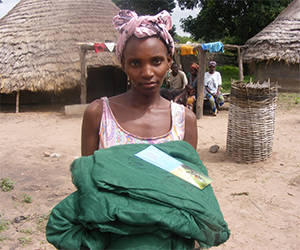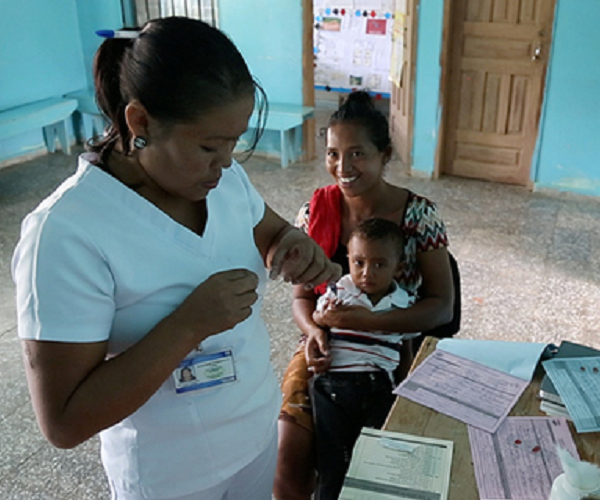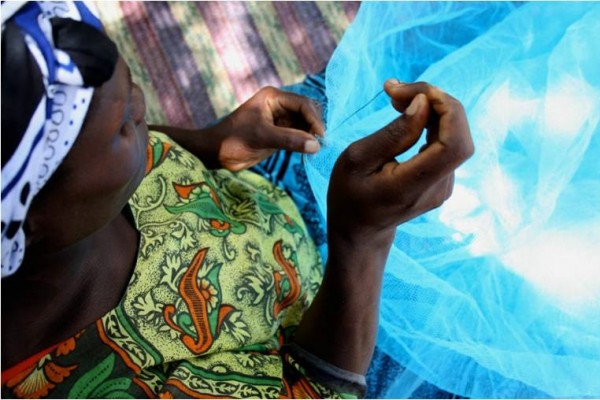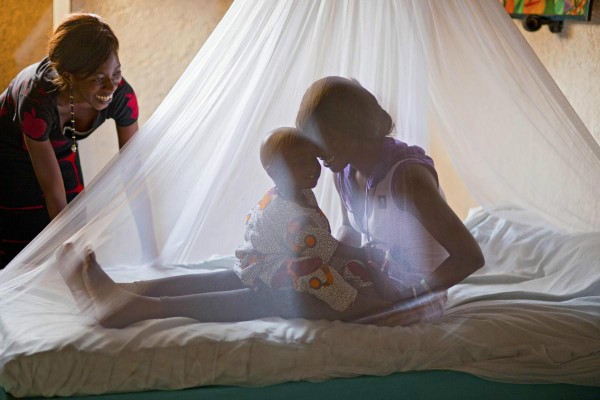The NetWorks project, in partnership with the National Malaria Control Program (NMCP), PMI and other partners, has successfully achieved Universal Coverage in six regions of Senegal: Kedougou, Kolda, Sedhiou, Tambacounda, Kaffrine and Kaolack. A total of 1,362,141 nets were distributed between June 2010 and April 2011. Mass distribution will continue in two additional regions, Diourbel and Fatick, between April and June 2011, delivering 1,360,000 nets. The next phases will continue until every household at risk in Senegal has a net to cover every sleeping space.
NetWorks plays a lead role in universal coverage distribution, taking on large parts of initial planning and budgeting, and financing a majority of the operational costs: local transport of nets, volunteer and supervisor stipends, orientation meetings and trainings, communication activities, and monitoring and evaluation. NetWorks places at least one ‘focal point’ in each region to help coordinate activities and partners on the ground, and an accountant to ensure the smooth disbursement of operational funds. The focal points also submit daily reports which are compiled into the Universal Coverage Newspaper, and shared with all partners on a daily basis. The nets are financed by a number of partners including USAID-PMI, Global Fund, World Bank and the Islamic Development Bank.
The NMCP made universal coverage its goal in 2009, shifting from its previous strategy of targeting children under five and pregnant women. Peace Corps volunteers piloted the strategy eventually adopted by the NMCP: house to house census of people, sleeping spaces and existing nets, in order to provide a new LLIN for each uncovered sleeping space during a community distribution.
Planning began in April 2010 with strong coordination and partnership at the national level, using lessons learned from the pilot distributions. The technical subcommittee, led by NetWorks Technical Advisor Dr Youssoufa Lo, developed a comprehensive plan of action and corresponding budget to determine the resources, both human and financial, needed to achieve UC in the first four regions. The process continued with numerous planning meetings to involve local and regional officials in the roll-out and tailoring of activities. At the community level, volunteers went house to house to register the number of people living in the house and the number of sleeping spaces. During the visits the volunteers discussed the importance of having every member of the family sleep under a net every night, all year long: these became the “Trois Toutes”: Toute la famille, toutes les nuits, toute l’annee. (Read “Three “Toutes” for Malaria Prevention” to learn more about the campaign.) When the registration visit was complete, the volunteer then handed the family’s representative a coupon to be used a few days later at the distribution site.
Registration data were validated at district and regional levels and any adjustments needed were made to accommodate over- and under-estimations of net need. The first distributions took place just as the rainy season was beginning, which made transport of the nets difficult in some areas. Local government chipped in to support the efforts.
Just prior to the distribution day, health post nurses set up distribution sites in each community, and laid out each family’s allotment of nets labeled with the date, and the village and family names to encourage use and reduce leakage into the market. While families waited to be called up, local community-based groups and health officials spoke to everyone about using the nets, and how to care for them and repair them. Families were called up one by one, and redeemed their coupon for the nets assigned to them.
In each region, community health workers and volunteers planned post-distribution house visits. These follow-up visits assisted families with hanging nets, and reinforced messages on consistent use and ways to care for and repair nets. They also provided an opportunity to monitor use rates and alert health staff to any issues that the community is facing, such as washing practices that contribute to nets tearing, or the desire to convert rectangular nets into round ones to make hanging easier.
NetWorks supports monitoring and evaluation of distribution activities to measure impact, glean best practices and achieve high coverage. Regular meetings of the coordinating committees, supervision of household registration, rapid checks after registration and distribution, validation of census data at the district level as well as process evaluations at the end of each distribution phase are all part of the Monitoring and Evaluation plan. In May, NetWorks and the PNLP will field a household survey to evaluate the sleeping space methodology. Senegal is the only country using this methodology in a large-scale distribution, and findings from the evaluation will help inform activities in other countries working towards universal coverage.
While universal coverage scales up across Senegal, planning for continuous distribution systems is underway to maintain high coverage of LLINs once the mass distributions are over.
Learn more about the NetWorks Project.





